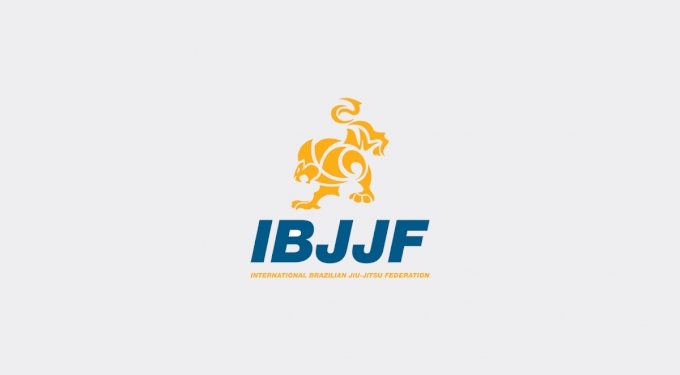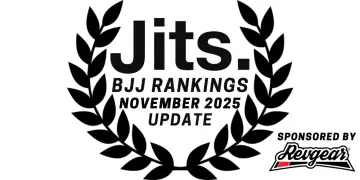For better or for worse, the IBJJF points system is the most widely used method of deciding a winner when there is no submission in a BJJ match. There are some close contenders of course, and there is a growing number of tournaments choosing to use the ADCC ruleset or EBI overtime in order to decide a winner in the absence of a submission. While there’s plenty of debate around whether or not the IBJJF ruleset is the best ruleset in the BJJ world, it’s clear that it is the one that most hobbyist or professional competitors will be need to be familiar with. It’s important for a competitor to understand every inch of the rules that they compete under, and it’s worth taking the time to read through how the IBJJF points system works as a result.
For more of our BJJ guides that explain the different aspects of the sport, click here.
How Does The IBJJF Points System Work?
The IBJJF points system is actually pretty simple, as there are 7 different positions or actions that are rewarded with either 2, 3, or 4 points. Each of these positions or actions must be stabilised for 3 seconds in order for points to be scored, any less than that will not score any points at all. If a competitor does an action or gets to a position that would score points but is caught in a submission attempt, they do not score those points until they escape the submission attempt and remain in the position. No competitor is ever awarded points for voluntarily giving up a position in order to score points by re-entering that position later.
The reason that points are used at all is to determine a winner when the time-limit is reached, if one competitor is submitted before that point then the other competitor wins regardless of the points scored until that point. The only other time that points are used is when both competitors are injured during the course of the match and neither one can continue, which is incredibly rare. The 7 different positions or actions that earn points and the corresponding amount of points scored are as follows:
Takedown – 2 points
A takedown is where both competitors are standing, and one of them forces the other to the ground on his back, sideways, or seated. It is also when one competitor forces the other to their knees, and then goes behind them to control their back without the need for hooks while they remain with at least one knee on the mat. Pulling guard is not considered to be a takedown as a result.
Sweep – 2 points
A sweep is where one competitor transitions from a bottom guard position to any top position. If the competitor who was swept remains on their hands and knees, the competitor performing the sweep must go behind them to control their back without the need for hooks while they remain with at least one knee on the mat.
Knee on belly – 2 points
Knee on belly is a position where the competitor on top has their knee or shin closest to the other competitor’s hip placed across their chest/ribs/stomach, with the other knee not on the ground. The competitor on bottom could be either face-up, or lying on either side.
Guard pass – 3 points
A guard pass is where the competitor on top manages to get past both legs of the competitor on the bottom, and arrives in either side control or north-south. In order to pass guard, the other competitor must establish some form of guard first.
Mount – 4 points
Mount is a position where the competitor on top is sitting on the other competitor’s chest. The top competitor can have one or both knees on the ground and can have one of the other competitor’s arms trapped underneath them, provided their leg is not above the shoulder. The bottom competitor could be either on their back or facing either side, but the top competitor must be facing their head and not their legs.
Back mount – 4 points
Back mount is a position where the competitor on top is sitting on the other competitor’s back, while they are face-down on the ground and flattened out.
Back control – 4 points
Back control is a position where the competitor on top is on the other competitor’s back, facing in any direction. The top competitor must have both hooks in without crossing their legs, and one arm can be trapped underneath the hooks so long as it is trapped below the shoulder.
Other Factors In The IBJJF Points System
There are other significantly less common ways that competitors can score points outside of the standard positions and transitions that can be done. For a complete look at the IBJJF rulebook, click here.
What Are Advantages?
Advantages are used in the IBJJF points system in order to determine a winner when two competitors have the same number of points. Any transition that would have scored points but was not stabilised for a minimum of 3 seconds is rewarded with an advantage instead. Positions that are not quite complete like knee on belly with the other knee on the ground, mount with both arms trapped, and back control with both arms trapped, the body triangle, or legs crossed receive advantages instead of points. If both competitors pull guard then the one who comes up on top receives an advantage for doing so, unless the transition starts and ends in 50/50. A competitor that has a submission attempt that puts the other competitor in real danger also receives an advantage.
What Are Penalties?
Penalties are used in the IBJJF points system in order to determine a winner when two competitors have the same number of both points and advantages. Not just that, but an accumulation of penalties leads to increasing consequences too. A competitor receiving two penalties gives an advantage to the other competitor, one receiving three penalties gives two points to the other competitor, and one who received four penalties is then disqualified from the match. Penalties can be awarded for a wide range of behaviour that breaks the rules of the sport, or for a perceived lack of combativeness (stalling). Stalling is where one competitor is choosing not to progress position or attempt a submission while also preventing the other competitor from progressing position or attempting a submission.
Criticism Of The IBJJF Points System
There’s a lot of criticism directed at the IBJJF points system, some of it fair and some of it not. One of the most justified points of contention is the fact that it doesn’t reward efficiency when it comes to taking an opponent down. It scores the actions of taking someone down and the actions of passing guard individually, while not scoring side control as a position. This means that a takedown directly into side control only scores 2 points whereas a takedown into guard followed by a guard pass is rewarded more heavily with 5 points. This is just one of the things that people point to as the reason for a lower level of standing grappling in BJJ.
There’s also some controversy around the way that back control is scored, as the position requires both hooks in order to be a valid scoring position. This means that something as simple as crossing the ankles means that the athlete does not score 4 points for taking their opponent’s back. More egregiously though, this also means that controlling an opponent with the body triangle doesn’t score any points either. This is quite a glaring omission considering the fact that many grapplers prefer this as a superior method of control and it is functionally no different to having both hooks in as far as achieving the position goes.
The other major element of the IBJJF points system that attracts criticism is the definition of a sweep. Every sweep scores 2 points, but a sweep is defined as a transition from bottom to top position involving the guard. A transition from bottom side control to any top position is defined as a ‘reversal’ instead, and does not score any points as a result. This means that a simple sweep from bottom side control to top side control receives no points, but recovering full guard and then sweeping to top side control scores 2 points. Not only is there no real difference in the two situations but, similarly to the criticism around takedowns, this doesn’t reward efficiency in the transition.












